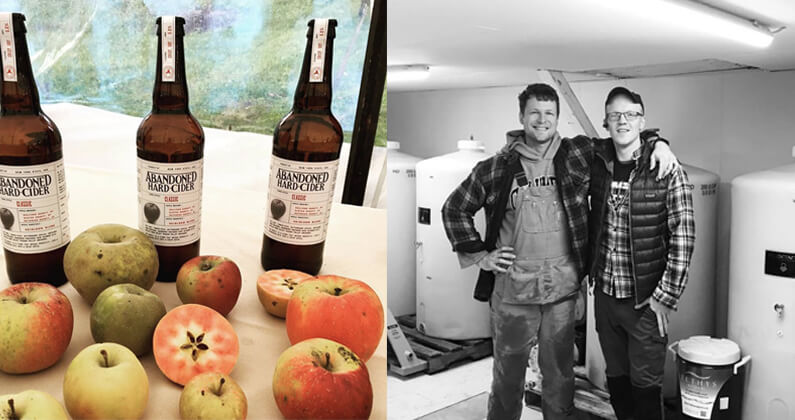With the culinary apple crop focused on producing big, beautiful and bright apples, ugly apples from forgotten orchards get a bad rap in the food world. They do, fortunately, have a home in the world of cider, with makers like New York’s Abandoned Cider salvaging wild apples from the feral or abandoned orchards producing high-quality, flavor-packed ciders.
Martin Bernstein, cofounder of Abandoned located in Neversink in the New York’s SUllivan County Catskills, is known to customers as “the apple guy.” His interest in the genetic aspect of apples influences the flavor of each cider he and cofounder and cider author Eric Childs, known as “the cider guy,” produce. From apple’s to fermentation this duo knows how to make a quality cider.
“My passion for cider is entirely rooted in my fascination with the Malus genus, and obsession with the diversity of flavors expressed by different apples once turned into cider,” says Bernstein. This intrigue in apples caught the eye of Childs, who in 2015, owned a fermentation supply shop. “When I told him about all the unique apple trees, I was foraging… he was impressed with the quality and the complexity of my foraged apple juice.”
After a few months of collaboration, the duo decided to start a cider business together n 2017, selling their first bottle of cider in 2018.
“My wife and I have a 110-acre farm in Neversink that used to be a dairy farm back in the day [that] features a lot of apple trees,” Bernstein says, noting most of the apples for Abandoned’s production come from the farm or from other places he forages. The original owners of the farm planted a large orchard there in 1918 and many of the trees are still alive today. “I have made it my mission to carry on the legacy by grafting my favorite wild apple scions to semi dwarf and standard rootstock and planting a few hundred of those each year.”
It is the cidery’s goal to emphasize every apple unique flavor without manipulating it or demanding it be a certain type of apple. “With access to so many wild apples, and by using wild yeast strains to ferment some of our blends, we willingly give up a lot of control over our product,” Bernstein says. “We guarantee that the foundation of our ciders is and always will be apples from wild and abandoned orchards. That is so important to us because so many of the apples we press are genetically unique and have some of the most intense flavors you’ve ever tasted.”
According to Bernstein, Abandoned Cider seeks to get away from the typical mass-produced ciders that are currently on the market. “I don’t care how ‘heirloom’ or ‘cider’ your farm apples are, they will never pack the kind of punch you get from a scraggly, 100-year-old, wild Pippin, clinging to a steep creek bank at 2,00 feet above sea level apple,” he adds.
No apple is to ugly or too wild for this cidery. However, the company does blend juice from apples grown at Fishkill Farms in Dutchess County with their wild apples to full supply and demand. Though this makes the ciders not exclusively wild, consumers can be sure to taste the wild side — and dedication involved — of every beverage.
“Besides the high quality we bring to our ciders… you should care that my friend and I had a blast making this cider,” Bernstein says of his production with Childs. “We spent months scouting the mountains and dales for interesting apple trees, and spent weeks climbing those trees, shaking limbs, hauling ugly fruits out of the woods on massive tarps.”






